Students love using math manipulatives, and they often help the students understand key math concepts. Students in the primary grades use manipulatives on a regular basis. As a fifth grade teacher, I try to actively bring in as many manipulatives as I can in my math instruction. In this post, I want to share with you my favorite math manipulatives, ideas about how to use them, and even some free printable activities for some of them.
This post includes affiliate links if you wish to purchase the math manipulatives mentioned in this post.
Base Ten Blocks
Base ten blocks are a must for teaching decimals. It takes awhile for the students to adjust in their head that the hundreds block is now a whole, but they really do well with using the blocks once they get that straight. Using base ten blocks helps them conceptualize decimals and helps them better understand the relative sizes of decimal place value. I was lucky to have a base ten block set that was specifically created for decimal understanding and even included models for thousandths. However, those sets are difficult to come by and a basic base ten block set will also do the trick. When I introduce decimals to my 5th graders, I do it with base ten blocks and then we draw our own models to match. When we get ready to add and subtract decimals, we bring the base ten blocks out again to model it before moving to hand-drawn models and finally the algorithm.
If you can splurge, this magnetic base ten block set is great for small group. I have a tabletop magnetic whiteboard and these are great for my small group time.
Decimal Dice
These decimal dice manipulatives are more for practice than conceptual understanding. I created a printable that I use specifically with the decimal dice
and the students enjoy completing it. The printable has the students rolling two decimals and then either comparing the decimals, rounding them or adding and subtracting them depending on which section of the printable they are on. I do wish that this particular set of dice provided more variety in the decimals that it offers, but it was still worth it!
In addition to this printable, you could also use these decimal dice with the base ten blocks. In a centers or a small group, the students could roll the dice and then build the decimal with the base ten blocks.
Fraction Dice
I really love this particular set of fraction dice that I purchased from Amazon. I like how it has more variety of fractions than the decimal set offers. These fraction dice
work well with modeling fractions, adding and subtracting fractions, comparing fractions, ordering fractions, and multiplying fractions. The students can roll the dice to determine the fractions they will work with. This two-page printable that I use reviews most of those key fraction skills.
Fraction Strips
Fraction Strips are a staple math manipulative in any upper elementary classroom. They are perfect for helping students compare fractions and understand equivalencies. I love this magnetic set to use on my markerboard while I am teaching a mini-lesson and also at my small group table. I usually just purchase one set of the magnetic fraction strips
and have my students actually create their own personal fraction strip set with construction paper (more about that on another post hopefully later this summer). We use fraction strips a lot in 5th grade to model converting fractions to equivalent fractions with the same denominator prior to adding or subtracting. I also use fraction strip sets to model subtracting mixed numbers while borrowing from the whole number.
Speaking of subtracting mixed number with regrouping, I created a pack of resources specifically for this skill after almost all of my students struggled. The activities all have a pizza theme and it really helps the students understand the skill. Click here to check it out in my TpT store.
Operation Dice
This set of operations dice make a great center as well. These would work really well with whole numbers in the younger grades as well. I use them to review decimal skills. I have the students select two decimal cards and then roll the operations dice
in between the two number cards. If they roll an operation, they complete the operation. If they roll an equality or inequality symbol, they determine if the symbol correctly compares the two numbers.
Place Value Disks
These place value disks were a real find when it comes to teaching expanded form of decimals and whole numbers. I have my students use the place value disks
to “build” a decimal (or whole number) and then they write that same number in expanded form.
Place Value Dice
These place value dice are also a good resource for practicing expanded form (whole numbers only). They are also perfect for practicing the skills of multiplying and dividing with the powers of 10. The different colors of the dice for each “power of 10” make these dice perfect for differentiation.

Tracing Paper or Patty Paper
I love using tracing paper or patty paper
(the wax paper used to separate meat patties) for multiplying fractions. The students draw and shade in both fractions and then overlap them to see the product.
If you need some more resources for multiplying factions with models, check out this resource that contains posters to help the students understand how to multiply and divide fractions with models. You can see it in my TpT store by clicking here.
Linking Cubes
Linking cubes or Katie Kubes are perfect for introducing or practicing the skill of volume of cubes and rectangular prisms. We spend at least a couple of days of our volume unit building prisms and determining the volume of those prisms. I also like to give the students a specific volume and have them create different prisms with that volume using the linking cubes
. They then record the dimensions of each prism on this printable.
Now for the good stuff! Click on the image below to download all of the printables shown on this post.

Save
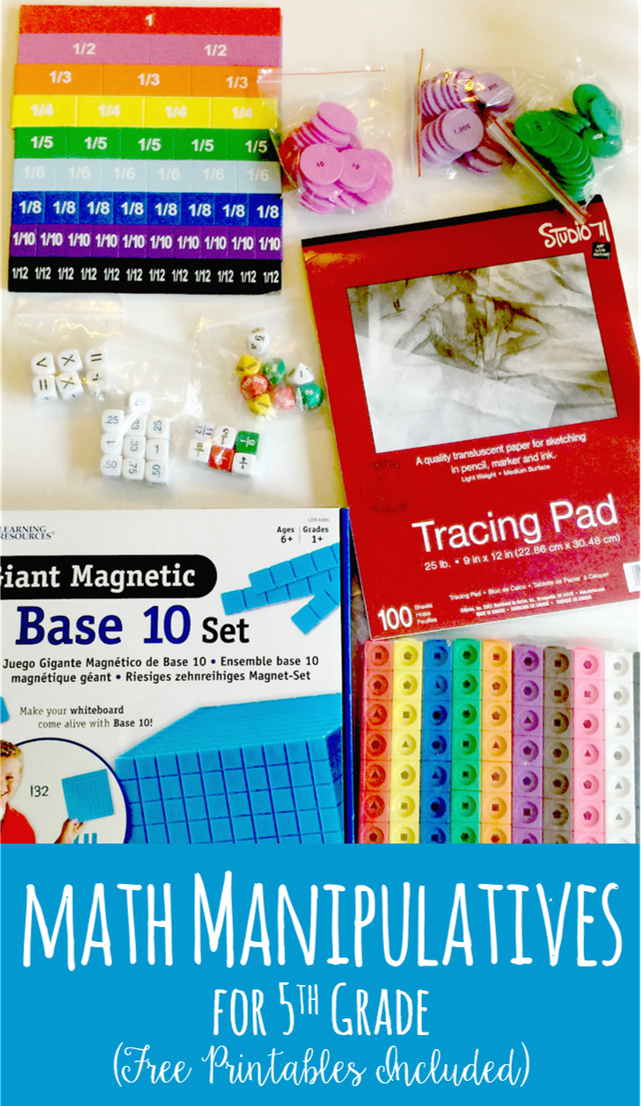
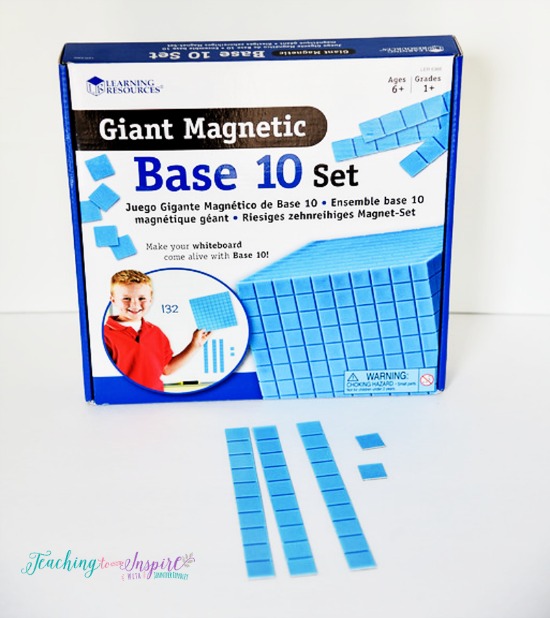
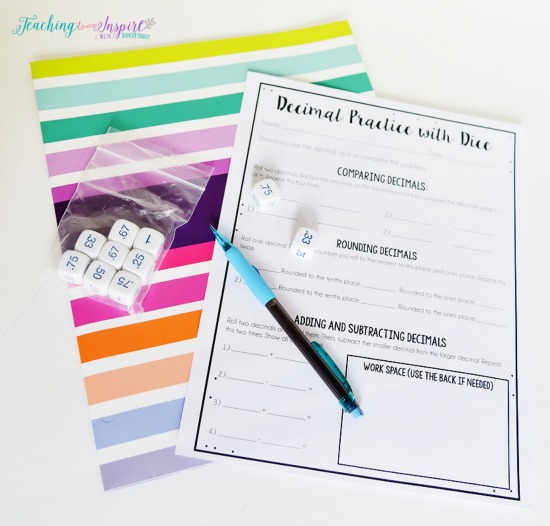
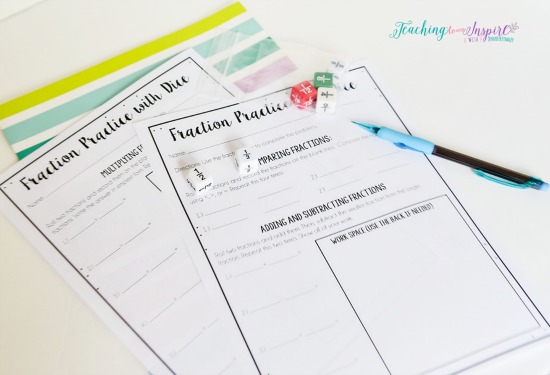

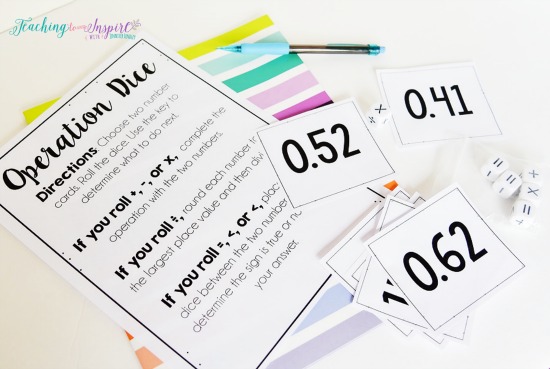


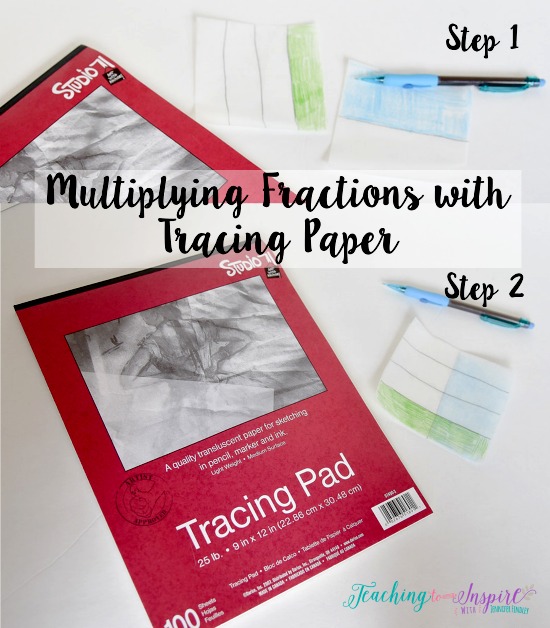
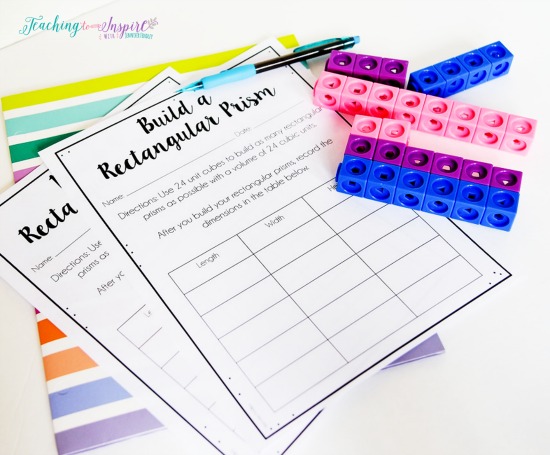






Thank you for sharing the manipulatives you use and some ideas about how to use them. I’m a math interventionist and this post really! Helped me!!! Love your entire blog!
Thank you, Betsy! I am so glad this post helped you!
Thank you for sharing such great ways to use manipulatives, especially with older kids. And thank you for the free printables!!
I love the idea of using the patty paper! What a unique way for kids to see the actual product, and I really appreciate the link you provided–I’m definitely ordering some for the upcoming year. It’s refreshing to see so many amazing ideas for our older kiddos. Thank you!!
Hi Jennifer,
My name is Lesley and I am a first year teacher starting in a couple of weeks. I am lucky enough to get 5th grade math right out of the gate. I love your site and look forward to exploring more. I was wondering if the base ten blocks pictured are the same ones you have or are yours different? If they are different could you send me a pic or info on the ones you use that are specifically for decimals?
Thank You so much!
Lesley
I’m a math development specialist with a large school district and your post is simply awesome ! Thank you for all the resources you share
Thank you for your great ideas! I’m moving from Kindergarten to 5th next year and I’m excited to try these centers!
Go to http://www.slideAroundmath.com to see a number line to 10,000,000 that was invented by an inclusion special education teacher in Rome, GA. There is an Easter Seals Indianapolis demonstration video and complimentary handouts.